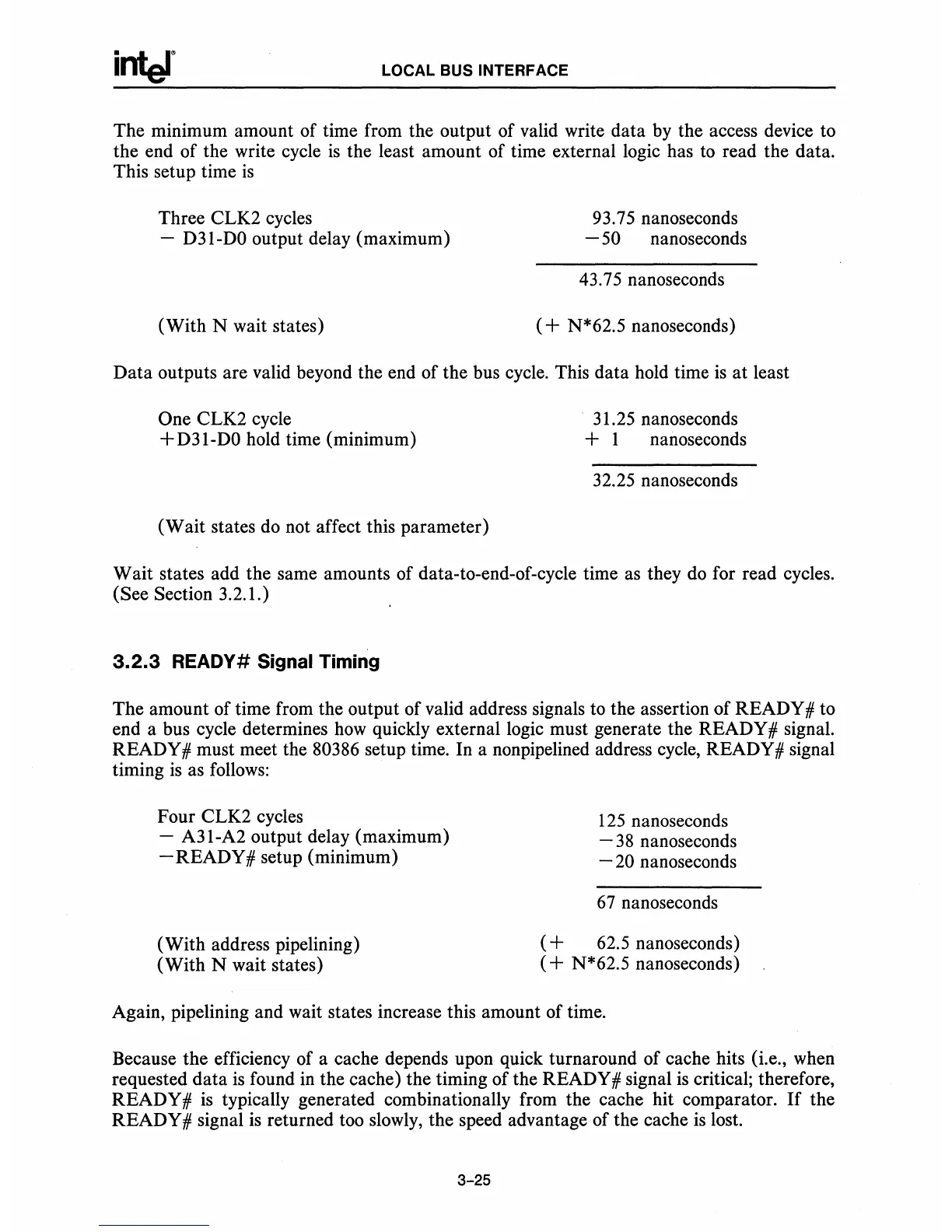inter
LOCAL
BUS
INTERFACE
The minimum amount of time from the output of valid write data
by
the access device to
the end of the write cycle
is
the least amount of time external logic has
to
read the data.
This setup time
is
Three CLK2 cycles 93.75 nanoseconds
-
D31-DO
output delay (maximum) -
50
nanoseconds
43.75 nanoseconds
(With N wait states)
(+
N*62.5 nanoseconds)
Data outputs are valid beyond the end of the bus cycle. This data hold time
is
at
least
One CLK2 cycle 31.25 nanoseconds
+
D31-DO
hold time (minimum) + 1 nanoseconds
32.25 nanoseconds
(Wait states
do
not affect this parameter)
Wait states add the same amounts of data-to-end-of-cycle time
as
they
do
for read cycles.
(See Section 3.2.1.)
3.2.3
READY# Signal Timing
The amount of time from the output of valid address signals
to
the assertion of READY # to
end a bus cycle determines
how
quickly external logic must generate the READY # signal.
READY
# must meet the 80386 setup time. In a nonpipelined address cycle, READY # signal
timing
is
as
follows:
Four CLK2 cycles
- A31-A2 output delay (maximum)
- READY
# setup (minimum)
(With address pipelining)
(With N wait states)
125
nanoseconds
-
38
nanoseconds
-
20
nanoseconds
67
nanoseconds
(+
62.5 nanoseconds)
(+
N*62.5 nanoseconds)
Again, pipelining and wait states increase this amount of time.
Because the efficiency of a cache depends upon quick turnaround of cache hits (i.e., when
requested data
is
found
in
the cache) the timing of the READY # signal
is
critical; therefore,
READY
#
is
typically generated combination ally from the cache hit comparator.
If
the
READY
# signal
is
returned too slowly, the speed advantage of the cache
is
lost.
3-25

